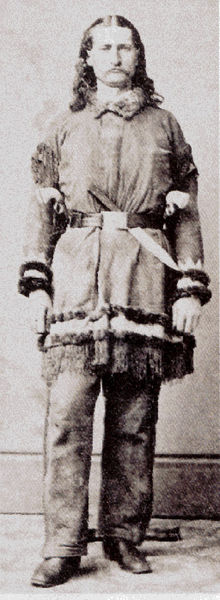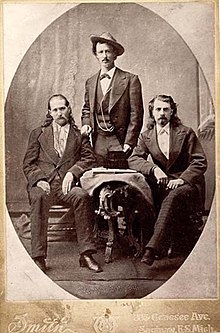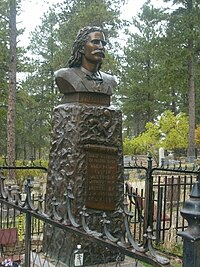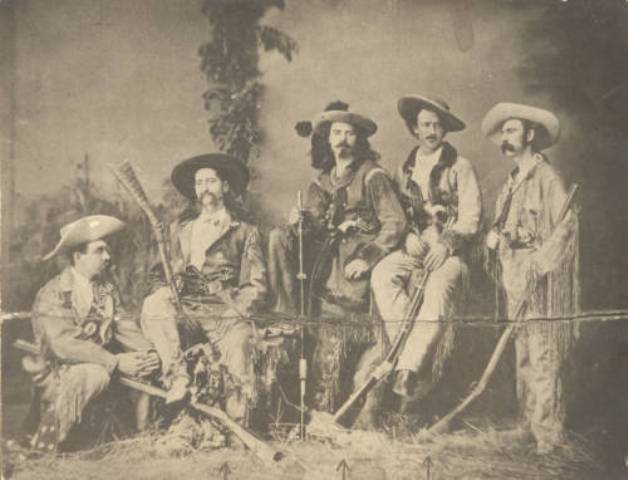How Did Bill Hickok Really Die
The Colt Navy was Hickok’s favorite revolver.
Wild Bill Hickok, byname of James Butler Hickok, (born May 27, 1837, Homer now Troy Grove, Illinois, U.S.—died August 2, 1876, Deadwood, Dakota Territory now in South Dakota, U.S.), American frontiersman, army scout, and lawman who helped bring order to the frontier West.His reputation as a gunfighter gave rise to legends and tales about his life. This day in history “Wild Bill” Hickok, one of the most famous of gunfighters and cowboys was murdered. He was already a living legend and he was murdered in a most cowardly way in Deadwood, South Dakota. On August 2, 1876, McCall walked into Nuttal & Mann’s Saloon #10 and point blank shot Wild Bill Hickok in the back of the head while Hickok was playing a hand of poker. McCall claimed he killed Wild Bill to avenge his brother’s death. At the time of the killing, Deadwood had no law so a group of miners held a trial in the McDaniel’s Theatre.
The idea that Wild Bill Hickok was holding black aces and eights when he was killed comes to us from Frank J. Wilstach, whose biography Wild Bill Hickok: The Prince of Pistoleers was published in 1926. Wilstach’s was the most throughly researched and accurate account of Hickok’s life that had appeared up to. The Colt Navy was Hickok’s favorite revolver. Wild Bill Hickok’s proficiency with a pistol is well known, but there remains some confusion concerning how he used his weapons and which ones he actually used. Before and during Hickok’s lifetime (1837–1876), the most.
Wild Bill Hickok’s proficiency with a pistol is well known, but there remains some confusion concerning how he used his weapons and which ones he actually used.
Before and during Hickok’s lifetime (1837–1876), the most readily available firearms were cap-and-ball, or percussion. Wild Bill and his contemporaries generally carried their pistols—actually revolvers, or six-shooters, but often referred to as pistols—butt forward in a belt holster or scabbard. This permitted either a cross draw or the reverse, or underhand, draw common to the Plains. In either case, the shooter grasps the revolver by the butt, slipping the thumb over the hammer spur and index finger into the trigger guard. As the gun clears the holster, it can be cocked, aimed and fired in one movement. Following is a summary of guns Hickok is known to have owned:


- 1847–56: Hickok hunted game with a flint or percussion lock shotgun.
- 1857: Old-timers in Johnson County, Kan., recalled that with a .44-caliber Colt Dragoon revolver, young Hickok could hit an oyster can at 100 yards.
- 1861–65: Photographic and documentary evidence indicates that Hickok was armed with one or a pair of .36-caliber Colt Navy revolvers, worn butt-forward in open-top holsters.
- 1867: Henry M. Stanley was the first to publish a reference to Hickok’s recently acquired pair of ivory-handled Navies.
- 1868–69: Wilbur Blakeslee of Mendota, Ill., photographed Hickok in March 1869 dressed in buckskins and carrying the above pistols thrust into a U.S. cavalry belt alongside a large butcher knife.
- 1869–73: The Navies remained prominent at Abilene and when he joined Buffalo Bill’s Combination theater troupe in September 1873.
- 1874: When Hickok left Cody at Rochester, N.Y., to return West, Cody and partner Texas Jack Omohundro presented Wild Bill with a pair of .44-caliber Smith & Wesson No. 3 American revolvers later said to be almost as accurate as a rifle. No further reference to them has surfaced.
- 1875–76: Reliable sources suggest that Hickok carried a pair of .38-caliber Colt Navy revolvers converted from percussion to accept either rim- or center-fire metallic cartridges.
- 1876: Wild Bill was buried with his prized sporting version of the .50-caliber Springfield Model 1870 rifle at his side.
- 1879: When Wild Bill was reburied on Mount Moriah, someone spirited the Springfield from his coffin. The rifle passed through a number of hands before landing in the James Earle collection.
Who Killed Bill Hickok

The long list of weapons allegedly owned by Hickok also includes a .32-caliber Smith & Wesson Model No. 2 revolver, a converted .44-caliber Colt Army Model 1860 and a .36-caliber Navy with the inscription J.B. HICKOK, 1869 on the back strap. As late as 1936, the inscription read J.B. HICKOCK, 1869, but the final C was later removed. The cylinder is incorrectly numbered, and the weapon’s origin is not certain, but it is now part of the Autry collection. Wild Bill is also alleged to have carried a pair of .41-caliber Williamson dual-ignition derringers as “hideout” weapons, but there’s no evidence he ever used a derringer in a gunfight.

Of all the weapons listed, Hickok’s clear favorite was indeed the Colt Navy. Introduced in late 1850 in .36-caliber, the six-shooter featured a 7 ½-inch barrel weighing 2 pounds, 10 ounces—almost half the weight of the formidable .44- caliber Dragoon revolver then in use. It was soon dubbed the Navy, or Belt, model. In 1861 the company produced a round-barreled version and dubbed the original the Old Model Navy—collectors later defined it as the Model 1851 and its rival the Model 1861. The Navy was a very accurate and reliable weapon. Tests by both the British and American governments revealed it was deadly at 100 yards and effective at more than 200 yards in the hands of a good marksman. Hickok was without question an expert. His reported July 21, 1865, shooting of Davis Tutt at 75 yards was no myth.
Wild Bill Hickok Death Photo
Originally published in the December 2008 issue of Wild West. To subscribe, click here.